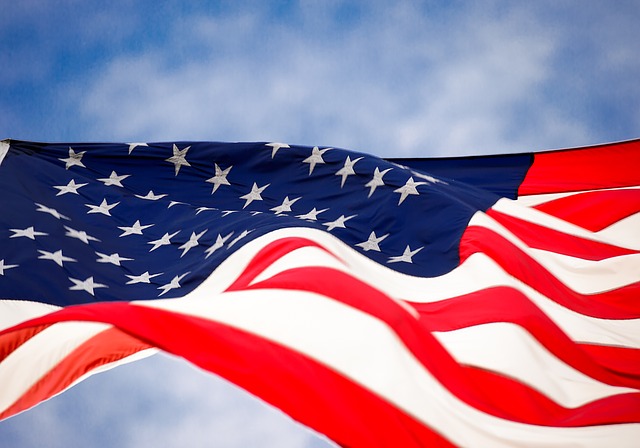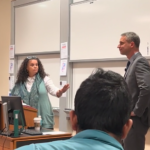How Not to be a Racist: The Student Demand for Mandatory Sensitivity Training

As campuses across the country are roiled in paroxysms of self-righteous indignation over race, some black students, enraged and emboldened by the murder of George Floyd under the knee of an abusive white police officer, have formed coalitions and presented elaborate, and breathtakingly audacious, lists of demands which they have nailed to the doors of their respective university administrations.
“The power to be found in victimization, like any power,” wrote Shelby Steele in The Content of Our Character, “is intoxicating and can lend itself to the creation of a new class of super-victims who can feel the pea of victimization under twenty mattresses.” Apparently, the new victims in the current culture of aggrievement on campus have been irritated by the ‘hard pea’ of racism and want everyone else to know and feel their pain, as well, since the lists of demands from the campus crybullies invariably includes one well-intentioned, but intellectually pernicious, item; namely, mandatory sensitivity training for all students, faculty, and staff on the topics of diversity, oppression, racism, and other maladies purportedly afflicting black students on today’s campuses.
In early June, for example, black student leaders at the University of Miami sent the administration a list of 11 recommendations, including their important goal of implementing a “mandatory university-wide diversity, social justice and cultural sensitivity training program.”
At the University of Pittsburgh, black students there, “Black Pitt,” apparently “are exhausted mentally, physically, as well as emotionally[and] [each] day we find ourselves overcompensating to make up for the University’s failures at combating racism on campus, in the classroom, and amongst students.” In order to change the racist character of the Pitt campus, the audacious students apparently desire to upend the entire academic structure of the institution and to “Transform the mission of the focus of our academic curriculum to be inclusive and comprehensive regarding the plight and triumphs of Black people.”
Part of that vision is, predictably, “a mandatory introductory course to touch upon systemic racism, white privilege, and prejudices that caters to each school under the University, including all undergraduate, graduate, and professional schools.” To be taught by black professors, these indoctrination sessions will target the “many first-year students [who] come into the University of Pittsburgh from non-diverse backgrounds.” And what is the benefit of this training in racism? “It is important to create a space that emphasizes open dialogue about race,” the students’ proposal reads, “and encourages students to be well-rounded in their own thoughts,” in other words, to have notions of race and social justice that conform precisely to the ideology of the students mandating the retraining of everyone on campus.
Interestingly, at Princeton University, it was some 350 virtue-signaling faculty members who sent an open letter to the University’s President, Christopher L. Eisgruber, urging the administration to address the systematic racism they perceived to exist and to “educate the Princeton University community about the legacy of slavery and white supremacy” and to “continue to actively confront Princeton’s ties to and culpability in slavery and white supremacy.”
The faculty letter of some 48 specific demands predictably includes the desire to “Implement administration- and faculty-wide training that is specifically anti-racist in emphasis with the goal of making our campus truly safe, welcoming, and nurturing for every person of color on campus . . ,” a process that “necessarily moves participants through stages of vulnerability, productive discomfort, and reflection.” Additionally, one of the mandatory aspects of these demands would outrageously “Require anti-bias training for all faculty participating in faculty searches, coupled with a requirement that all departments applying for search authorization specify in their submission to the [Dean of Faculty] how they will identify and recruit scholars of color.”
So while these sanctimonious moral scolds may feel aggrieved and in need of campus-wide support systems to provide them “safe” spaces in which they can escape racism and oppression, the idea that universities should be compelled to set up mandatory training and teaching about racism, oppression, inclusion, social justice, cultural diversity, and the myriad of other, related biases that animate the worldviews of these new victims is as wrong-headed as it is impractical.
First of all, the idea that black students, and only black students, should demand and receive mandatory sensitivity courses, programs, or workshops that all students and faculty must attend, presumably to make them less racist and more tolerant, is flawed. It is flawed, first, because it is not the business of universities to tell students what to think, but to teach them how to think; and it is also misguided because it assumes that only black students are so aggrieved that special campus-wide instructional remedies should be devised to soothe their aching sensibilities. With an alarming spike in the number and prevalence of anti-Semitic incidents as a result of campus anti-Israel activism, for example, one could make a compelling argument that mandatory sensitivity training to protect Jewish students from anti-Semitism might be justified and, in fact, more critical than sensitivity about anti-black racism.
And how, exactly, would such training sessions, courses, or workshops be conducted, assuming the demands for their creation are answered? Would students be graded in such mandatory courses? Could anyone question what was taught, have an alternate view of the existence or extent of racism, oppression, other biases as outlined in the courses, or present different views than the ones established, in advance, by the like-minded individuals who conceived of, developed, and fervently believe in the content and truthfulness of this one-sided instruction?
Also, in the event that the mandatory instruction is ever instituted, students and faculty with differing views of the content of that instruction would, by necessity, be proscribed from expressing those views, could not engage in alternative discussions, and would thereby be silenced out of fear of being labeled racists—precisely the conditions that are antithetical to academia’s fundamental precepts of free speech and robust debate.
It is important to remember that it is not the role of universities to create “safe spaces” in which students are sheltered from any ideas that might challenge their pre-conceived notions; it is not the business of universities to insure that no one’s feelings are hurt. Yale University’s insightful 1974 Woodward Report on free speech affirmed this very point, suggesting that “. . . [a university] cannot make its primary and dominant value the fostering of friendship, solidarity, harmony, civility, or mutual respect . . . It will never let these values, important as they are, override its central purpose. We value freedom of expression precisely because it provides a forum for the new, the provocative, the disturbing, and the unorthodox.”
Unfortunately, many on the left believe that their progressive views are virtuous and moral, and those of conservatives are regressive, cruel, and unjust. The moral rectitude of these academics is not only ill-conceived, but startling and offensive. “Of all tyrannies, a tyranny sincerely exercised for the good of its victims may be the most oppressive,” observed literary critic C.S. Lewis, who bemoaned exactly this type of individual, “omnipotent moral busybodies . . . who torment us for our own good will torment us without end for they do so with the approval of their own conscience.”
Richard L. Cravatts, PhD, President Emeritus of Scholars for Peace in the Middle East, is the author of Dispatches From the Campus War Against Israel and Jews.




